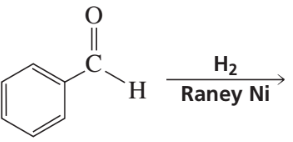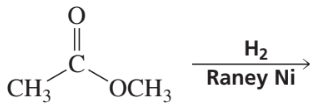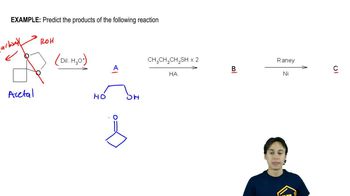Here are the essential concepts you must grasp in order to answer the question correctly.
Hydrogenation
Hydrogenation is a chemical reaction that involves the addition of hydrogen (H2) to unsaturated organic compounds, typically alkenes or alkynes, to convert them into saturated hydrocarbons. This process is often facilitated by catalysts such as Raney nickel, which enhances the reaction rate and selectivity. Understanding hydrogenation is crucial for predicting the products of reactions involving unsaturated substrates.
Recommended video:
The definition of hydrogenation.
Raney Nickel Catalyst
Raney nickel is a finely divided nickel-aluminum alloy that serves as a highly effective catalyst for hydrogenation reactions. It is particularly useful in reducing carbon-carbon double and triple bonds, as well as in the hydrogenation of functional groups like nitriles and carbonyls. Familiarity with the properties and applications of Raney nickel is essential for understanding its role in the reactions presented.
Recommended video:
Functional Group Transformations
Functional group transformations refer to the chemical reactions that convert one functional group into another, altering the reactivity and properties of organic molecules. In the context of the given reactions, recognizing how hydrogenation affects various functional groups, such as nitriles and esters, is vital for predicting the final products. This concept is foundational in organic synthesis and reaction mechanisms.
Recommended video:
Identifying Functional Groups




 Verified step by step guidance
Verified step by step guidance Verified video answer for a similar problem:
Verified video answer for a similar problem:



 6:02m
6:02m